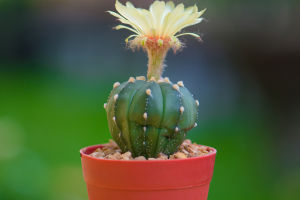Saffron, the precious spice derived from the delicate stigma of the Crocus sativus flower, stands out not only for its vivid color and distinct flavor but also for its exorbitant price tag.
With a value that often surpasses that of gold, saffron holds a revered position in the world of spices, embodying centuries of history, tradition, and meticulous cultivation methods.
Rarity and Labor-Intensive Cultivation
The primary reason behind saffron's lofty price is its rarity and the labor-intensive process involved in its cultivation. Saffron cultivation demands meticulous attention to detail and a significant amount of manual labor. Each saffron crocus flower produces only three delicate crimson stigmas, which must be carefully handpicked during a brief harvest window in autumn.
The geographical constraints further add to saffron's exclusivity. The majority of the world's saffron production comes from Asian countries, followed by countries like India, Spain, and Greece. These regions offer the optimal combination of temperature, sunlight, and soil pH necessary for the cultivation of high-quality saffron.
Labor-Intensive Harvesting and Processing
The painstaking process of harvesting saffron involves delicate hands plucking the crimson threads from each flower, with each thread contributing to the precious yield. Once harvested, the stigmas undergo a meticulous drying process to preserve their flavor, aroma, and color. This drying process is often done manually, further adding to the labor-intensive nature of saffron production.
Moreover, it takes a large number of saffron flowers to yield even a small amount of the spice, intensifying its scarcity and contributing to its high price. The laborious cultivation, harvesting, and processing methods involved in saffron production significantly drive up its cost, making it a luxury commodity sought after by discerning consumers worldwide.
Medicinal and Culinary Significance
Beyond its culinary applications, saffron has been revered for its medicinal properties for centuries. It is believed to possess antioxidant, anti-inflammatory, and mood-enhancing properties, making it a prized ingredient in traditional medicine systems such as Ayurveda and traditional medicine.
In the culinary world, saffron is prized for its unique flavor profile, which combines floral, honey-like notes with a subtle earthiness. It is a staple ingredient in a wide range of dishes, from paella and risotto to desserts like saffron-infused ice cream and cakes. Due to its intense flavor and vibrant color, a small quantity of saffron can elevate the taste and appearance of any dish, making it a coveted spice among chefs and home cooks alike.
Historical and Cultural Significance
The allure of saffron extends beyond its culinary and medicinal properties, encompassing a rich tapestry of history and culture. Saffron has been traded and revered for millennia, with references to its use dating back to ancient civilizations such as the Greeks, Romans, and Egyptians.
In many cultures, saffron is associated with luxury, prosperity, and royalty. It has been used to dye fabrics, adorn sacred rituals, and even as a form of currency in some societies. The esteemed status of saffron is evident in its portrayal in art, literature, and folklore, where it is often depicted as a symbol of wealth and opulence.
Saffron's status as the most expensive spice in the world is a testament to its rarity, labor-intensive cultivation process, and multifaceted significance. From its medicinal properties to its culinary versatility and cultural significance, saffron embodies centuries of tradition and craftsmanship. Despite its lofty price tag, saffron continues to captivate the senses and inspire admiration among connoisseurs worldwide, reaffirming its status as the "golden essence" of the spice world.


